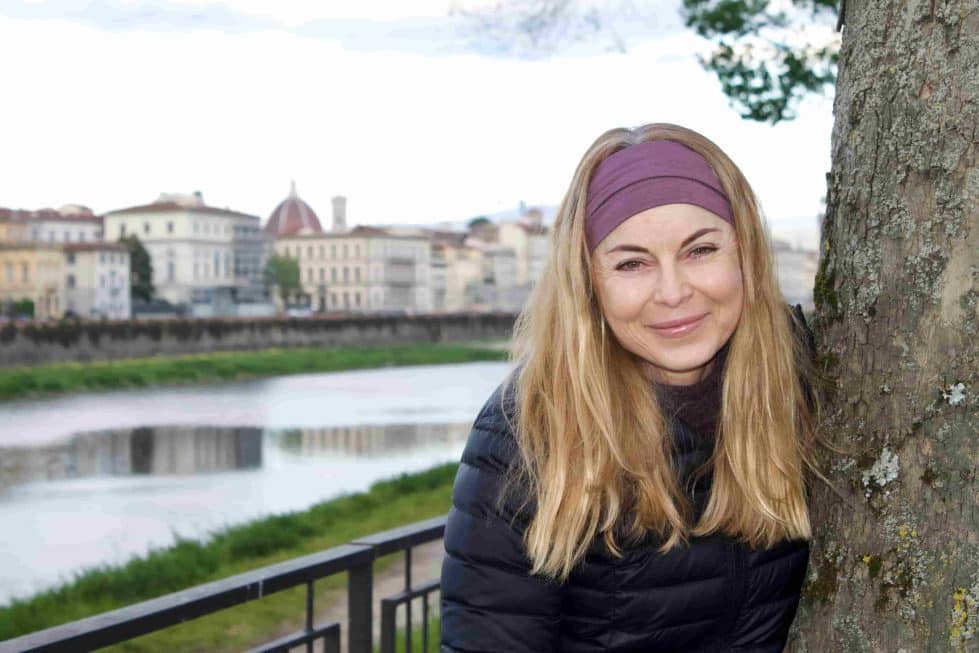Editor’s Note: Chandi Wyant is a beautiful writer. I fell in love with her book Return to Glow, about her transformational hike on the Via Francigena. In fact, we are talking to Chandi during our book club April 29th on Facebook Live. Chandi is a Renaissance art historian and licensed tour guide in Florence. She also has a fantastic blog about her life in Italy called Paradise of Exiles. — Kathy McCabe
I watch from my cold and mostly unfurnished apartment in Florence as President Conte announces, his discomfort visible, that we’ll be under lockdown the next morning. My breath falters on the exhale as Italy becomes the first democratic country since World War II to impose a nationwide lockdown. We’re hurled suddenly into… what? What will it mean, what will be expected of us?
I feel the collective pressure of it, as if all of us in the bel paese are squeezed by a giant vice—one that forcibly narrows our worlds and leaves us caved in on ourselves, bones bruised.

Cimabue’s Crucifix Santa Croce – Elena de Blasi
To find my way each day through Italy’s pain and death to a place of hope, is to be in Dante’s dark wood, pushing aside cobwebs, seeking sunlight on a meadow. It is to be exhausted for no apparent reason except for the overwhelm of a collapsing world.
The pope’s lament follows me to bed. In the hauntingly empty piazza he admonishes, “We were not shaken awake by wars or injustice across the world, nor did we listen to the cry of the poor or of our ailing planet. We carried on regardless, thinking we would stay healthy in a world that was sick.”
The questions grasp at me. Fingers pulling my sweater sleeves. Will my hopes and investments in creating a life here be another attrition of this pandemic? Tourism is my bread and olive oil. I hear murmurings that tourism will not return this year. Does the virus kill dreams too?
My mind finds its way to Cimabue’s crucifix.
Named “the most illustrious victim” of Florence’s tragic 1966 flood. An early example of Christus Patiens—depicting the realism of suffering.
Yes, it can be seen as irreparably damaged, a victim of a disaster. But I see it now as a survivor. The outline of the Christ is still visible, and what Cimabue intended is still perceivable:
Submission. Surrender. Open-hearted in the presence of suffering. –Chandi Wyant

